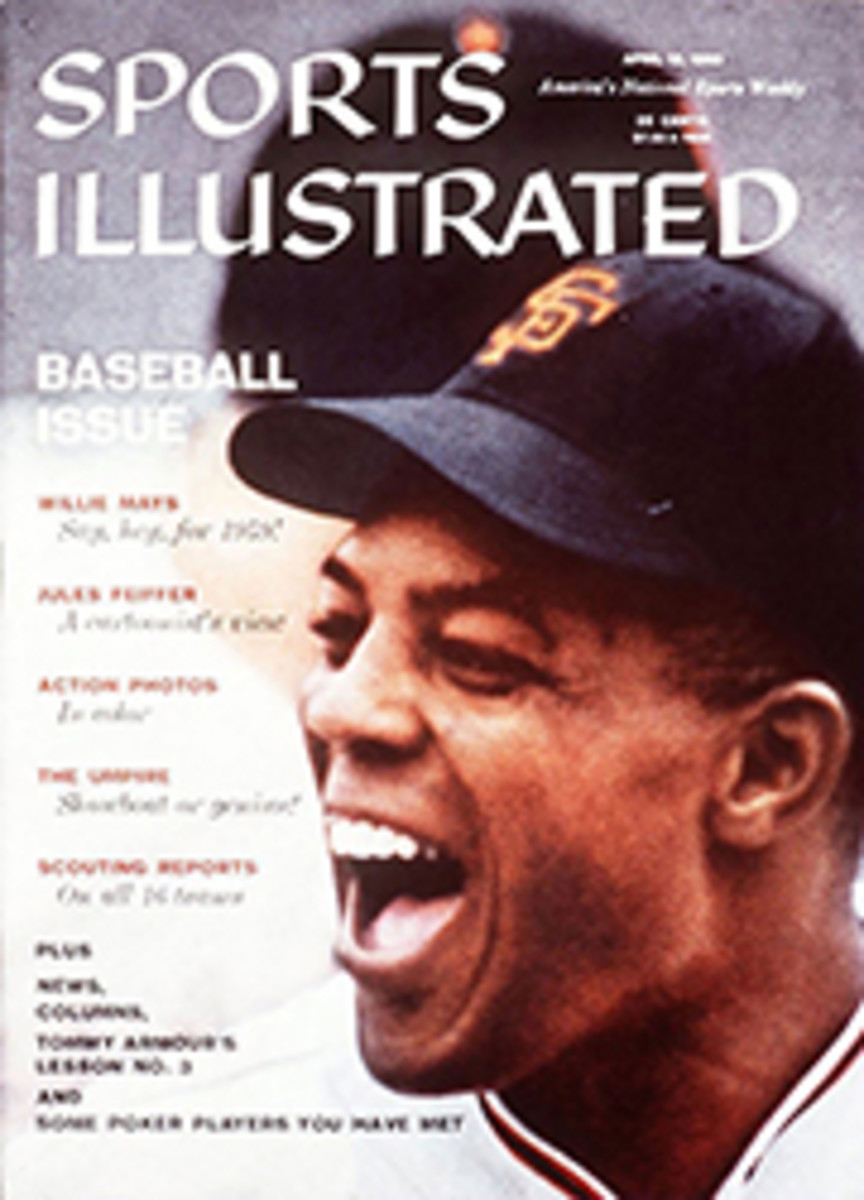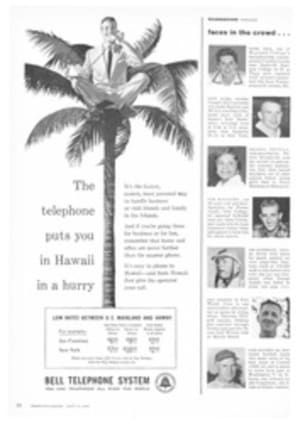
CHICAGO CUBS
STRONG POINTS
The Cubs have corralled a collection of free-swinging home run sluggers who care little for opposing pitchers' reputations. Major league leaders in home runs (182) and total bases, Chicago was second-best in the National League in hits and runs scored. Five players—Ernie Banks, Walt Moryn, Lee Walls, Bobby Thomson and Dale Long—had 20 or more homers and impressive slugging averages. Mightiest of this crew of ponderous hitters is the smallest—willowy Ernie Banks—Most Valuable Player in the league last season. Hitting sharply with beautiful coordination, Banks snapped his powerful wrists for a major league high of 47 home runs and 129 RBIs. On top of that, he hit .313 and led the league in slugging. There has never been such a hard-hitting shortstop before in baseball. From the heavy outfield bats of Moryn in left, Thomson in center and Walls in right came 71 homers and 231 runs batted in, while big (6 feet 4 inches, 218 pounds) First Baseman Dale Long bashed 20 home runs and 75 RBIs. The inspirational third baseman, Al Dark, hits few home runs, but can do everything else with a bat. Two fine young fast-ball pitchers, Moe Drabowsky (23) and Dick Drott (22), form the nucleus of the youngest pitching staff in the majors. And, luckily for Chicago, 30-year-old Don Elston is a first-rate reliever whose 69 appearances led both leagues and whose 2.88 ERA led the Cubs.
WEAK SPOTS
Old age, lead-footed runners, pitiful defense and inexperienced pitching could be enough to waste all that power hitting. Al Dark is 36, and simply isn't able to play a full schedule any more. Thomson is 35 and Long and Moryn are 33; that's a lot of age for a club to field every day, no matter how well these aged ones hit last season. No one in the outfield can throw hard enough to slow up opposing base runners, and there's practically no mobility in the infield. Even 23-year-old Second Baseman Tony Taylor, one of the few Cubs who can run, has little polish at his position. And the rest, for one reason or another, don't stop many balls from skittering through for hits. Except for heavy-hitting First Baseman Jim Marshall and the unproved Earl Averill, there is little reserve strength to cheer Manager Bob Scheffing when he has to go to his bench, which he may have to do frequently this summer. Sammy Taylor and Cal Neeman are promising catchers, but neither hit better than .259 last season. The pitchers have youth on their side and great potential, but outside of Drabowsky and Drott, who ever heard of any of them? There are Dick Ellsworth and Glen Hobbie and John Buzhardt and Bob Anderson and Taylor Phillips, and a bunch of other older names like Henry, Hillman, Singleton, Solis and Ceccarelli. Even the "veterans" Drabowsky and Drott have had only one good year apiece since they've been in the majors. Last season this pitching staff walked nearly 200 more batters than the champion Braves and was worst in the majors in complete games (27) and shutouts (5). Why, even the Senators did better than that. Despite all the runs scored by the team, the pitchers allowed even more to the opposition. To be fair, remember that Drabowsky did miss all of spring training in 1958 (he was in the Army) and nearly all the second half of the regular season (he had a bad elbow). Too, Drott suffered from various injuries, and possibly from having had too good a rookie season the previous year. And both Drott and Hobbie, the starter-reliever who won 10 games last season, were in the Army this spring during training. Most of the young pitchers can throw hard, and in time they might make a fine pitching crew. But probably not in 1959.
ROOKIES AND NEW FACES
For the first time in years, the Cub lineup was set before spring training even started. Perhaps the most important addition to the reserves was husky Earl Averill, the Pacific Coast League's MVP in 1958. An extremely versatile player who hits with good power, Averill can play the outfield, all the infield positions and catch. He may be a useful replacement for Dark or anyone else who needs a rest. Rookie John Buzhardt came up to the Cubs the last few weeks of the season in 1958 and won three games while losing none. Two of his wins were five-hitters and his ERA was an impressive 1.88. He will be worked into the starting rotation this year.
THE BIG IFS
The old folks have to swing those big bats the way they did last year, and they have to play regularly. Injuries and tired muscles would really hurt this unbalanced team with its thin reserve strength. If the hitters do as well, or come close to, their extraordinary 1958 performances, then the team's chances for a big year depend on the young pitching staff.
THE OUTLOOK
The Cubs are putting a lot of faith in the past performances of their hitters and the future performances of their pitchers. The old hitters and the young pitchers could come through to give the Cubs a hot team. More likely, though, both will fail, and the poor Cubs will be toying with last place again.
[originallink:10490276:43241]
PHOTO
WITH A LONG SWEEPING SWING, ERNIE BANKS OF THE CHICAGO CUBS SHOWS HOW HE HIT 47 HOME RUNS LAST YEAR, MOST IN EITHER LEAGUE
PHOTO
BANKS
PHOTO
WALLS
PHOTO
DARK
PHOTO
MORYN
PHOTO
THOMSON
PHOTO
LONG
PHOTO
T. TAYLOR
PHOTO
S. TAYLOR
PHOTO
DRABOWSKY
PHOTO
DROTT
PHOTO
HOBBIE
PHOTO
ELSTON
ILLUSTRATION

